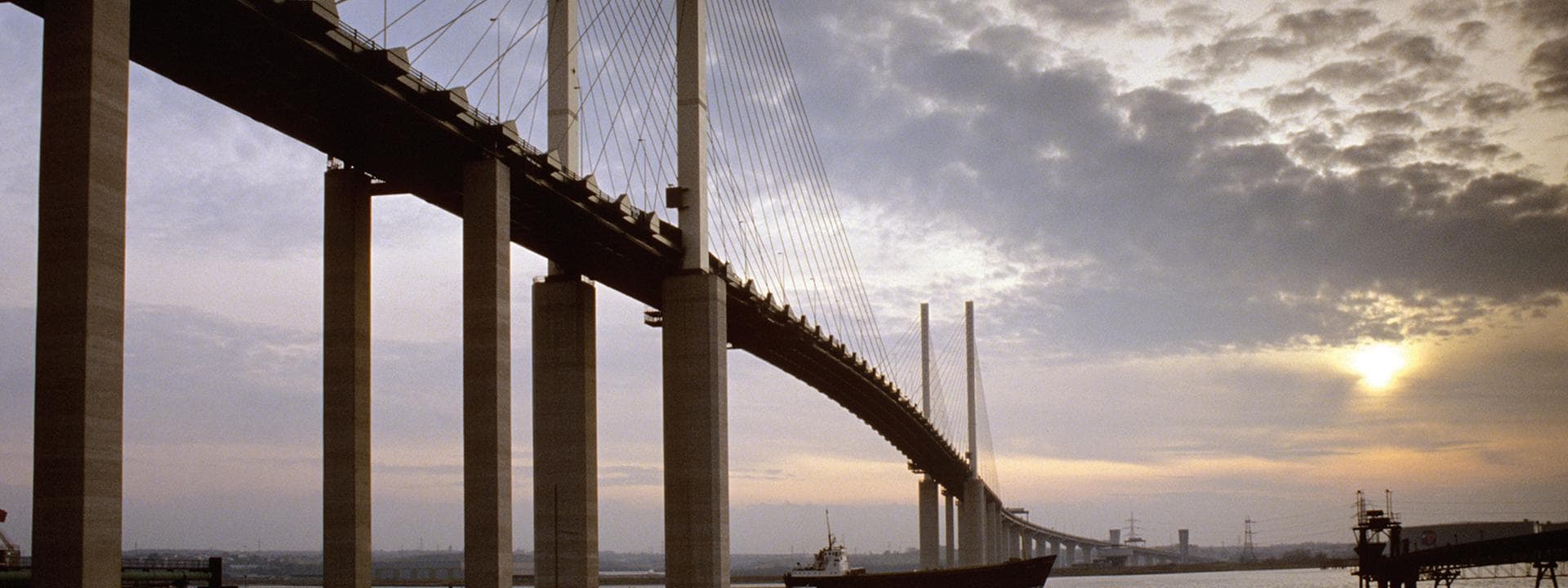Queen Elizabeth II Bridge
Project summary
- Bridge project: Crossing point for the M25 motorway, over the Thames at Thurrock
- Start/finish dates: 1988/1991
- Bridge type: Cable-stayed
- Length: 812m (305m main span)
- Structure:137m concrete pylons, CFA piles, cages, hollow column stems
- Production: In situ concrete pour in cassions and underwater in coffer dams
- Shipping height: 57.5m
- Main Contractor: Trafalgar House
Product and volume supplied by Hanson:
- Regen (GGBS/Purfleet), cement (Ketton)
- C70 concrete mixes for piles, foundation and bridge segments (6500 ship at 10 knots)
- CEM I and 70% Regen (GGBS) mixes (durability DC 3/4 ground conditions, colour, control of heat of hydration)
- Regen volume 40,000m3
Learn more about Regen
Regen is Ground Granulated Blast furnace Slag, commonly known as ‘GGBS’.
It is a cement substitute, manufactured from a by-product of the iron-making industry.
Using one tonne of Regen in concrete reduces the embodied CO2 by around 850kg, compared to using one tonne of Portland Cement. It also increases the concrete’s durability and is more sustainable than other cement substitutes such as Fly Ash.
In the UK, GGBS is usually supplied as a separate component for concrete and is added at the concrete mixer.
It can replace 70 per cent or more of the Portland cement. In British Standards, GGBS is referred to as an ‘addition’ and counts fully towards the cement content in concrete.
Regen conforms to BS EN 15167-1 “Ground Granulated Blast furnace Slag for use in concrete, mortar and grout” and is available throughout the UK, accompanied by a full technical and logistical support package.
